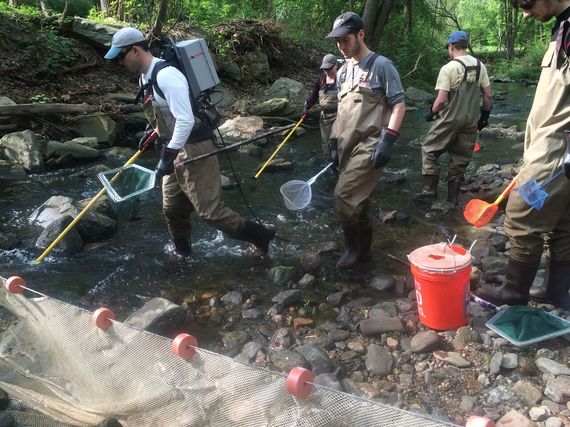- December 15, 2015
- in Green Tips
- by marcos
- 825
- 0

Most of us give nary a thought to tap water anymore. We bypass the sink and head right to the refrigerator to select a plastic bottle of water to quench our thirst. Not Dr. Janet Haas, chairman of the William Penn foundation. Haas has spent the last 20 years thinking strategically and devoting $43 million of the foundation’s resources to improving and maintaining the Delaware River Watershed, which provides drinking water to 15 million people or 5% of the United States population. The foundation announced a new $5 million grant this Monday.
Haas said, “I understood early on that the scarcity of good quality drinking water would be a global problem. 750 million people in the world currently don’t have safe drinking water.”
The Delaware River Watershed, which encompasses 13,500 square miles, spans across 5 states-New York, New Jersey, Pennsylvania, Delaware, and Maryland. It provides 50% of the drinking water of New York City, 100% of Philadelphia’s, Wilmington’s and Camden’s. With the water flowing through multiple states, the Delaware River Watershed Initiative, which coordinates the work of 50 organizations in the area, is the rare entity that has the ability to monitor the entire water supply.
The Open Space Institute, National Fish and Wildlife Foundation, Institute for Conservation Leadership, and the Academy of Natural Sciences of Drexel University and others have joined together to align priorities for land protection and restoration, and to assess water quality impacts using standardized sampling and assessment methods. Prioritizing land preservation to improve water quality may seem counter-intuitive. Haas explained, “We supports efforts to create trails parallel to waterways in the belief that people who recreate near the water will be inspired by its beauty and more likely to become stewards of the water.”
Dr. Stefanie A. Kroll, an aquatic ecologist at the Academy of Natural Sciences of Drexel University, is the project science director of the Delaware River Watershed Initiative. In that capacity, she monitors the fish, algae, insects and salamanders living in the water. Her team regularly takes water samples to analyze the chemicals in the water and assess the health of the in-stream habitat for fish and insects. They utilize science to mitigate the damage of human activity in the area. For example, they furnish the data that educates farmers on the best farming techniques and products such as fertilizer to lessen the harm to the water from agricultural runoff.
The Huffington Post employed a simple, bottom line test to determine if these conservation efforts have been successful- can you drink the water? Kroll said, “I drink the tap water and I know what’s in it. Besides, some of the water that you are drinking out of plastic bottles is actually tap water. Some of it is just tap water from a different place.”
[youtube http://www.youtube.com/watch?v=qezuK_JzYcc&w=560&h=315]
Her boss, David Velinsky, the vice president for Academy Science at the Academy of Natural Sciences of Drexel University, concurred. He said, “The water is good. The water here is better than bottled water. If you want to improve the environment; if you want to have a lower environmental footprint in all sorts of things; you are better off drinking the tap water than going out buying bottles. Period. End.”
He suggested “Buy a reusable water bottle. You are helping the environment much more by taking your plastic water bottle and refilling it all the time. Think about it. You have to transport the bottles. You have to get the plastic. Where does the plastic come from? Petroleum.”
— This feed and its contents are the property of The Huffington Post, and use is subject to our terms. It may be used for personal consumption, but may not be distributed on a website.


